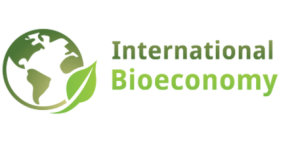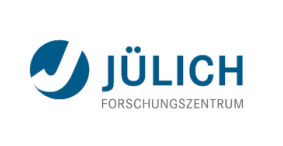PiñaFibre

Pineapple is more than just a tropical fruit — it's a key player in the bioeconomy through its fibre, known as Pineapple Leaf Fibre (PALF). Extracted from pineapple leaves, PALF is a sustainable, biodegradable material used in textiles, paper production, and even eco-friendly composites for the automotive industry. By utilizing agricultural byproducts like pineapple leaves, PALF reduces waste and adds value to pineapple farming. This innovative use of a common crop highlights how bio-based solutions can drive sustainability, reduce environmental impact, and support circular economies.
We offer alternative plant fibres for bio-based textiles and composites industry
Project partners: FZJ (IBG-2 and IBG-4), NSTDA (NBT and NANOTEC), and Agrosavia (Palmiera)
funded by Bioeconomy International grant (NSTDA, Agrosavia, RWTH Aachen, und IBG)
Project Archive
Irrigation 4.0
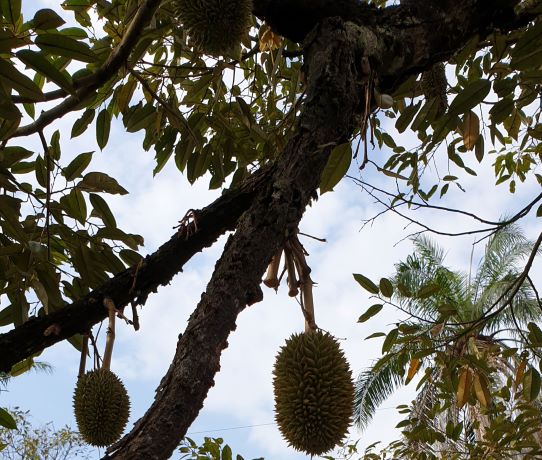
IRRIGATION 4.0
Both in Southeast Asia and Europe, the transition towards a bio-based economy holds great potential for economic growth, rural development and decreasing fossil fuel dependence, but requires tackling important challenges. One of these is the steady, reliable and affordable supply of sustainably produced biomass in the agricultural sector. A reliable supply of biomass (for food, feed, fuel) in terms of quantity, quality and continuity, heavily depends on agronomic management practices. A smart irrigation system aimed at optimizing water use in a cost- and effort-affordable way addresses the EU and SEA bioeconomy strategies for the agricultural sector, including the sustainable exploitation of resources, resource use efficiency, and rural development. Moreover, both the irrigation-dependency of plant biomass production and the deficiency of resources will further increase due to climate change. As such, a smart irrigation system fits well within objectives of mitigating and adapting to climate change. Finally, stimulating innovation in the agricultural sector is high on the strategic agendas of both the EU and SEA. This collaborative project aims at creating innovation as it is fully embracing the concepts of agriculture 4.0, including improved wireless connectivity, sensor network, minimizing power consumption, cloud storage, and big data processing.
The project focuses on a plant-based irrigation platform that contributes to the advancement of sustainable plant production systems in Thailand, Germany and Myanmar. It involves the development of a new irrigation scheduling system that can reduce water consumption in the agricultural sector by being tuned to the plant’s actual water use, and to agronomic practices aimed at maximizing yield. It therefore improves and modifies soil moisture- and evapotranspiration-based irrigation platforms, currently available on the market.
The project receives funding from BMBF and NSTDA in the frame of the Southeast Asia-Europe Joint Funding Scheme for Research and Innovation (https://www.sea-eu-jfs.eu/funded-projects).
Quinoa Diversity
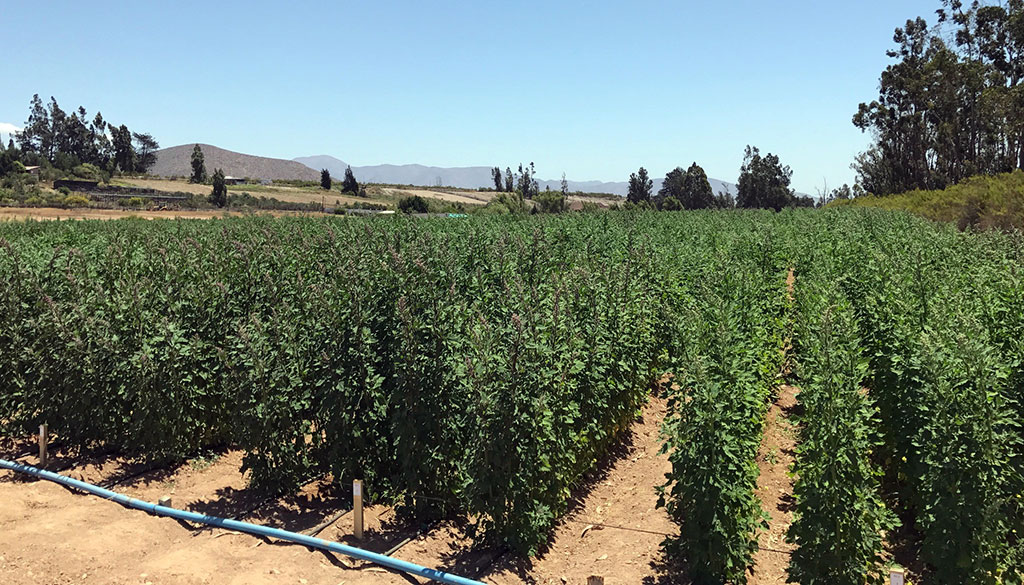 Quinoa field in Chillán, Chile
Quinoa field in Chillán, ChileQuinoa Phenotypic and Genotypic Diversity for Yield and Composition
Because of the rich composition of its grains and its ability to grow in adverse conditions, Chenopodium quinoa is a species with large potential for exploitation by the food industry for both human and animal nutrition. However, there are currently several limitations that need to be overcome for a more widespread international adoption of this crop and derived products including a high concentration of saponins in seed teguments, and the scarcity of knowledge about genetic diversity. Our project will provide a comprehensive genetic characterization of the quinoa panels and, for the first time, allows detailed genetic studies to assess diversity present in the INIA panel. Secondly, the field phenotyping experiments will provide an unprecedented fine measurement of important plant parameters that might also be linked to geographical origin, growth season temperature, precipitation amount and possible tolerance to adverse agronomic and environmental conditions.
CASSAVASTORE
 Cassava root system
Cassava root system
Utilization of genetic and phenotypic variation of storage root development of Cassava (Manihot esculenta Crantz) to improve an important bio-economy crop.
Our research aims to utilize genetic and phenotypic variation of storage root development of Cassava (Manihot esculenta Crantz) to improve an important bio-economy crop. The CASSAVASTORe project aims to increase products derived from cassava starch through a better understanding of storage root development, and subsequently, new cassava varieties.
The project Algnutrient-UrBioSol
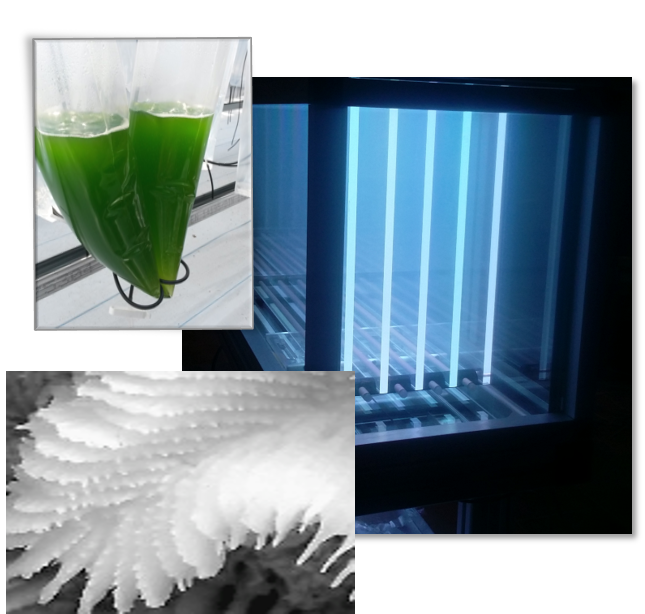
Microalgae are a high-potential and promising future resource for several components. Their growth in non-axenic photobioreactors is subject to a highly dynamic environment and dependent on light availability. Hitherto, main problems are access of cells to light for photosynthetic C fixation and the need for control of and constant attention to such a PBR production system.
Algnutrient-UrBioSol (GER-RUS Bioeconomy International) develops microalgal photobioreactors (PBR) of the next generation, characterized by improved energy conversion, higher biomass production and CO2 sequestration. An automation concept shall contribute to PBR usability in urban or industrial areas and facilitate connectivity to local resources, especially nutrient re-cycling from wastewater. Key parameters are increased light availability to the microalgae by new PBR concepts - hydrogel cultures and coupling to photovoltaics for better energy efficiency. Another is the investigation of biological prerequisites for culture control and efficient nutrient cycling.
To improve controllability and light distribution homogeneity within the PBR, a nanoparticle-hydrogel will be introduced into such a system. The understanding and subsequent incorporation of microalgae stress reactions in relation to abiotic and biotic factors into a PBR management system shall deliver decision criteria for a highly automated PBR control. Heterogeneous conditions in larger-volume production systems (day/night, temperature, biotic competition) threaten culture stability and predictability. The characterization of algal culture reactions within this system shall lead to production protocols and decision parameters for culture handling as well as culture ‘steering’ methods by defined stresses, e.g. harvest through stress-induced flocculation or promoting production of metabolites of interest (antioxidants, storage molecules, bioactives). This shall lead to a simplified technique, which is more energy- and expenditure-efficient and becomes utilizable for a wider range of applications and users, as well as contribute to the knowledge base of growing different algae species in dynamic climates.
(Moscow, September 20th-21st, 2018)
GlobE - BiomassWeb
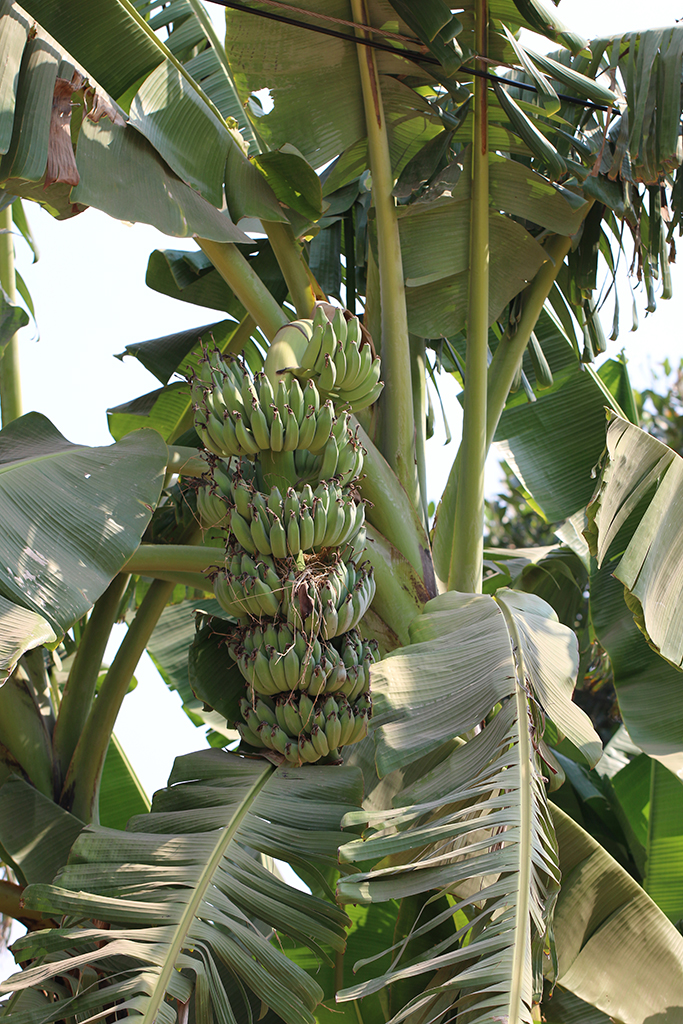
Our research is structured around the analysis of biomass demand, supply and related value webs, research innovations, and implementation including capacity and network building.
BiomassWeb will investigate the production and utilization of biomass in Africa by looking at current and future biomass demand and supply. The project will identify innovation opportunities in pre- and post-harvest production technologies, institutional settings and governance structures. This will be complemented by implementation activities focusing on joint learning and network building to create innovative capacity beyond the project duration.
Vietwood
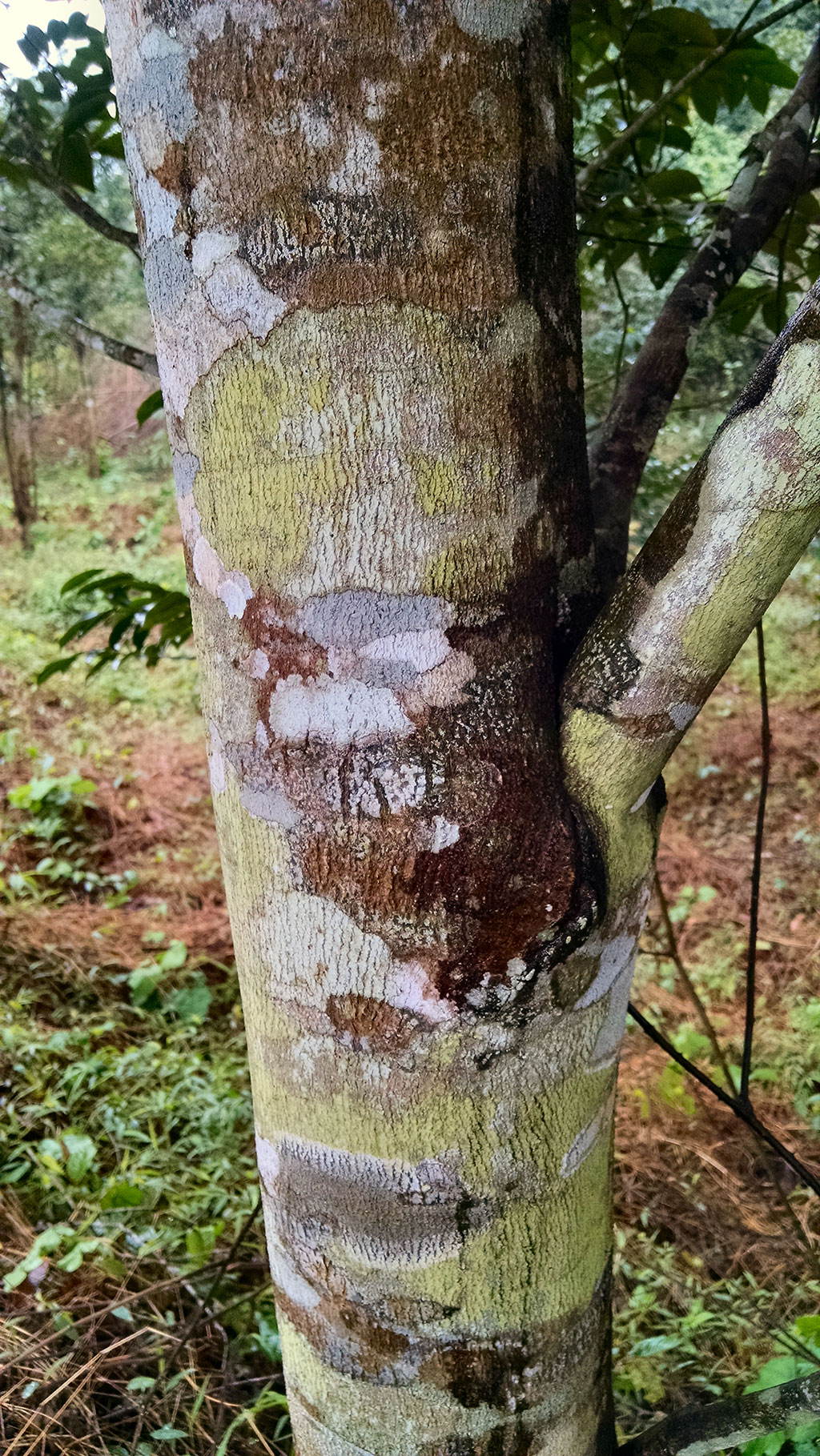 Characteristic bark of Aquilaria crassna at Cúc Phương national park, Ninh Bình province, North Việt Nam
Characteristic bark of Aquilaria crassna at Cúc Phương national park, Ninh Bình province, North Việt NamAgarwood is a high value oleoresinous wood. It is formed in the heartwood of the tropical Thymelaeaceae Genera Aquilaria and Gyrinops in response to injury and fungal infection. The resin is rich in sesquiterpenes (SQT) that are synthetically non-accessible and remain unique in nature. The resinous wood (Agarwood) and its steam extractable essential oil are used for the production of incenses, ornamental displays, fine perfumery and traditional medicines. Since the early 1990’s the Agarwood market have revealed a continuous and yearly increasing consumer demand (annually over 5 Billion US$). Whereas Indonesia serves as main supplier of bulk Agarwood of moderate quality from various Aquilaria and Gyrinops species - Vietnam is known together with Thailand & Laos to export top quality resinous wood from Aquilaria crasssna.
South East Asian tree genera Aquilaria and Gyrinops are the only botanical resources that can produce Agarwood. However, the biogenesis of the oleoresin is randomized which implies that in natural forest stands only less than 10% of the tree populations within a given habitat contain the resin. Due to the increasing demand, natural populations from both genera are critically endangered and hence are included on Appendix II of the Convention on International Trade in Endangered Species of Wild Flora and Fauna (CITES, 2005). The main aim of VETWOOD is to develop biotechnological enabling tools and knowledge to achieve a sustainable production of Agarwood on various levels of the value chains.
L-C-Phene
 Workshop on low cost phenotyping at Balcarce in Argentina, May 2016
Workshop on low cost phenotyping at Balcarce in Argentina, May 2016In this project we want to initiate a partnership between the Unidad Integrada Balcarce (UIB) in Argentina and the Forschungszentrum Jülich in Germany which will be related to improvement of plants for bioeconomy. Specifically, the partnership would address the establishment of a roadmap for access to modern technologies in Germany for Argentinian scientist with the goal to identify relevant traits important for breeding selection and low tech approaches and techniques which are suitable for screening and analysis of these traits for breeding and plant production.
SAPPHIRE
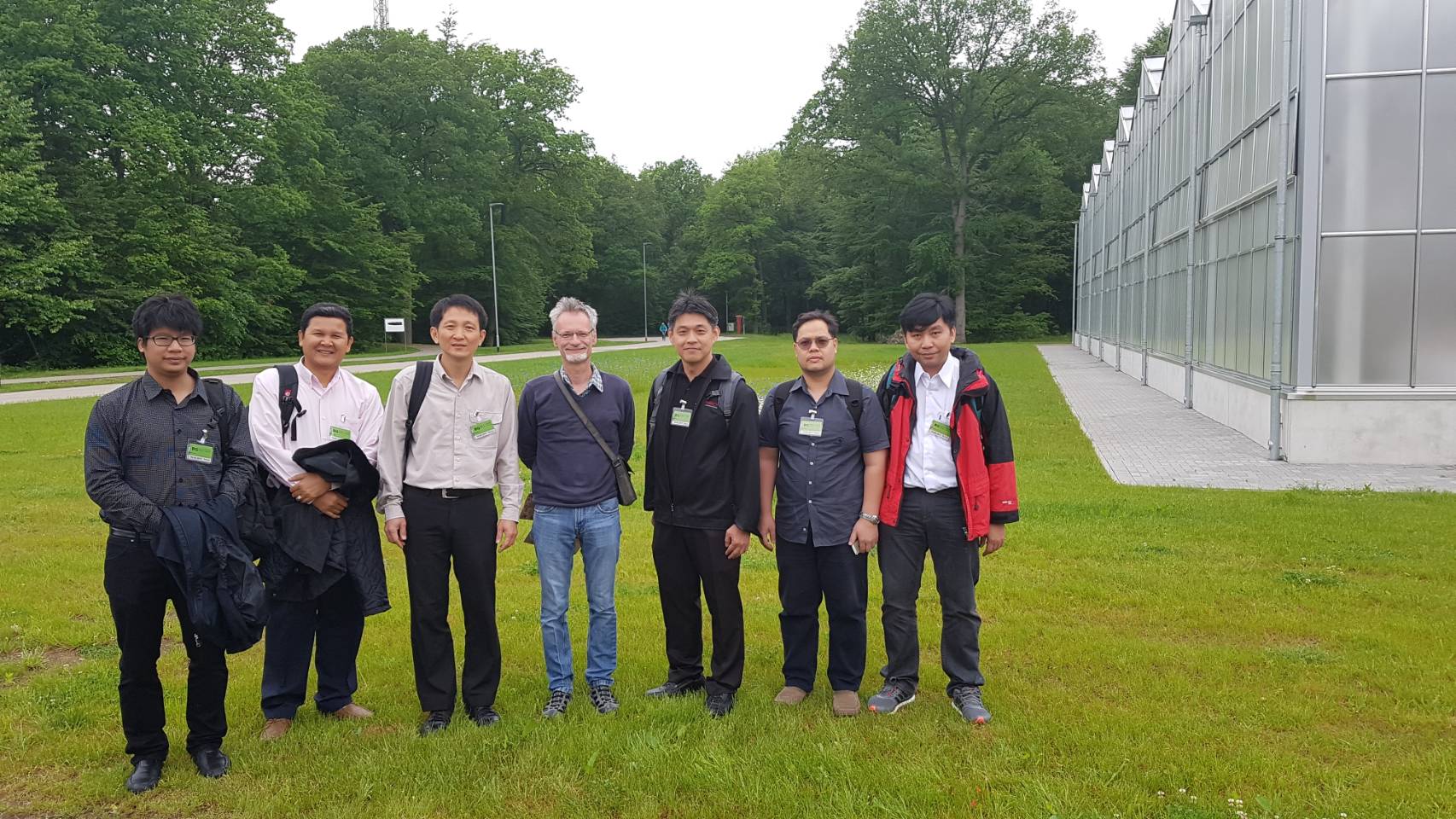 Visit of colleagues from NECTEC in Juelich
Visit of colleagues from NECTEC in JuelichPlant phenomics is still lagging behind compared with genomics. Significant efforts were initiated in Europe and worldwide leading to the establishment of scientific networks aiming at developing and sharing novel infrastructure for controlled environment and field research. However, initial costs for the development and implementation of non-invasive imaging and tomographic phenotyping methodologies remain high. Several stakeholders, namely plant breeders (public and private domains) and farmers often cannot directly benefit from research outcomes in this field.
morePURESBio
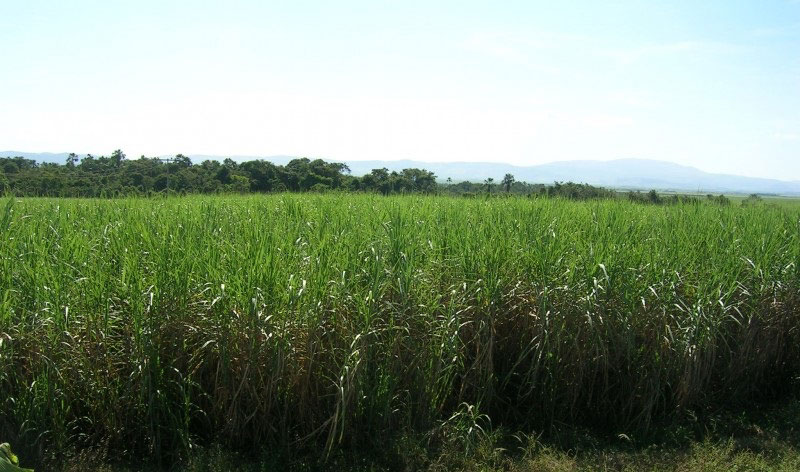 PURESBio sugar cane field in Brazil
PURESBio sugar cane field in Brazil
In Brazil, more than 9.6 million hectares of sugarcane are cultivated annually, with more than 493 million tons of crops being in use in south-central Brazil alone. Typically, about half the crops are used as feedstock in the bioethanol production. The quantity of organic residues generated during its production is enormous: Every litre of ethanol generates 5 l of vinasse, a potassium-rich liquid and each ton of sugarcane creates approximately 30 kg of press cake, high in organic matter and major plant nutrients. Additionally, one hectare of sugar cane generates up to 15 t of foliage and fibrous residues, which are typically directly reused for heat generation. As with all these residues, nutrient contents vary with their respective feedstock and production processes and conditions. Together with our partners from research and industry, we aim to understand and optimize the reuse of these potentially valuable organic residues as part of the German-Brazilian collaboration project “PURESBio”.
Objectives of the project are:
• Process understanding: Analyses of plant-soil interactions following application of residues and targeted modification of those residues aiming at an increase in biomass production.
• Sustainable use of agricultural soils: Systematic study of residue application on soil fertility and plant growth in agricultural soils.
• Technology development: Transfer of existing non-invasive phenotyping technologies to sugar cane and development of technologies for the incorporation of residues as fertilizers in sugar cane production.
Project coordination:
Dr. Nicolai D. Jablonowski
Institut für Bio- und Geowissenschaften, IBG-2: Pflanzenwissenschaften, Forschungszentrum Jülich GmbH
D - 52425 Jülich
Tel.: +49-2461-61-8682 Fax -2492
Email: n.d.jablonowski@fz-juelich.de
Dr. Silvia Schrey
Institut für Bio- und Geowissenschaften, IBG-2: Pflanzenwissenschaften, Forschungszentrum Jülich GmbH
D - 52425 Jülich
Tel.: +49-2461-61-5957 Fax -2492
Email: s.schrey@fz-juelich.de
Sponsored by BMBF
ASHES
 Bagasse ash
Bagasse ash
Brazil is the largest sugarcane producer worldwide harvesting 40 % of the global sugarcane crop in 2014. While the cane juice is used for sugar and ethanol production, the fibrous residue remaining after crushing of canes and juice extraction, the bagasse, is burned for energy production. In 2014, the dry ash produced by burning of bagasse amounted to more than six million tons and the production is still increasing.
Bagasse ashes are alkaline and contain varying amounts of minerals essential for plant nutrition. Since the incineration conditions modify the ashes´ chemical composition and plant nutrient availabilities, the aim of the German – Brazilian project “ASHES” is (i) to find optimal processing conditions for maximizing the bagasse ash nutrient, mainly phosphorus, availabilities for plants and (ii) to increase the ash phosphorus amount and availability by pre- and post-burning modifications.
Our project partners from research and industry realize bagasse ash and bagasse ash-based fertilizer production. At IBG-2, we investigate the phosphorus availability for sugarcane, soybean and maize in greenhouse pot experiments and on the field.
Objectives of the project are
• Improvement of thermochemical processes with the aim to increase energy efficiency and to enable the recycling of process ashes to close the material cycles
• Evaluating the nutrient availability and effects of various ashes-based fertilizer formulations on sugarcane, soybean and maize growth, composition and performance
• Successful development of a bagasse ash-based fertilizer to reduce the dependency on mineral resources
Project coordination
Dr. Nicolai D. Jablonowski
Institute of Bio- and Geosciences, IBG-2: Plant Sciences, Forschungszentrum Jülich GmbH
D-52428 Jülich
Tel.: +49-2461-61-8682
Fax: +49-2461-61-2492
Email: n.d.jablonowski@fz-juelich.de
Dr. Silvia Schrey
Institut für Bio- und Geowissenschaften, IBG-2: Pflanzenwissenschaften, Forschungszentrum Jülich GmbH
D - 52425 Jülich
Tel.: +49-2461-61-5957
Email: s.schrey@fz-juelich.de
Sponsored by BMBF
ManureEcoMine
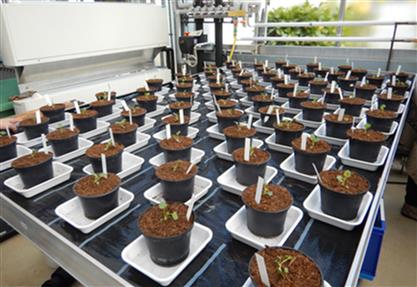 Greenhouse trial to evaluate different manure-derived fertilizers blends
Greenhouse trial to evaluate different manure-derived fertilizers blends
Green fertilizer up-cycling from manure: Technological, economic and environmental sustainability demonstration
European pigs and cows jointly produce about 1.27 billion tons of manure per year. Manure is a largely unexplored and exquisite mining source for the recovery of nutrients such as nitrogen and phosphorus. The technological processes used in the project cycle are of proven efficacy in the wastewater treatment field and will be combined in several process configurations to demonstrate their technological and environmental potential at pilot scale for cow and pig manure.
To render the cradle-cradle approach complete, the fertilizer effects of recovered nutrients on plant growth and soil health will be analyzed. Green fertilizers produced by blending of the recovered nutrients are tested in greenhouse conditions by in-depth characterization of the plants´ response to evaluate the effects of the manure-derived fertilizers on plant growth and performance. These studies cover plant availability of the nutrients and effects on plants and soil microbial communities as target organisms.
Objectives of the project
• Demonstrate the technological and economic feasibility of integrated technologies that have not yet reached the market
• Supply industry with methods to blend and refine these streams into high performance fertilizers and soil enhancement products
• Preserve the environment by sustainably recovering and reusing nutrients from livestock manure
Project coordination:
Dr. Nicolai D. Jablonowski
Institute of Bio- and Geosciences, IBG-2: Plant Sciences, Forschungszentrum Jülich GmbH
D-52428 Jülich
Tel.: +49-2461-61-8682
Fax: +49-2461-61-2492
Email: n.d.jablonowski@fz-juelich.de
Dr. Silvia Schrey
Institut für Bio- und Geowissenschaften, IBG-2: Pflanzenwissenschaften, Forschungszentrum Jülich GmbH
D - 52425 Jülich
Tel.: +49-2461-61-5957
Email: s.schrey@fz-juelich.de
ManureEcoMine (1.11.2013-31.10.2016) was funded by the European Commission under the Seventh Framework Programme (grant agreement no. 603744).

